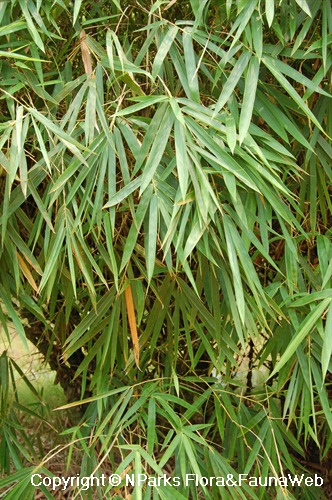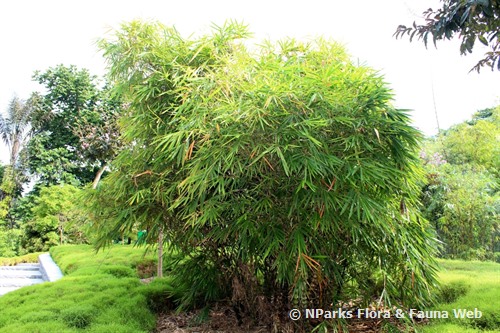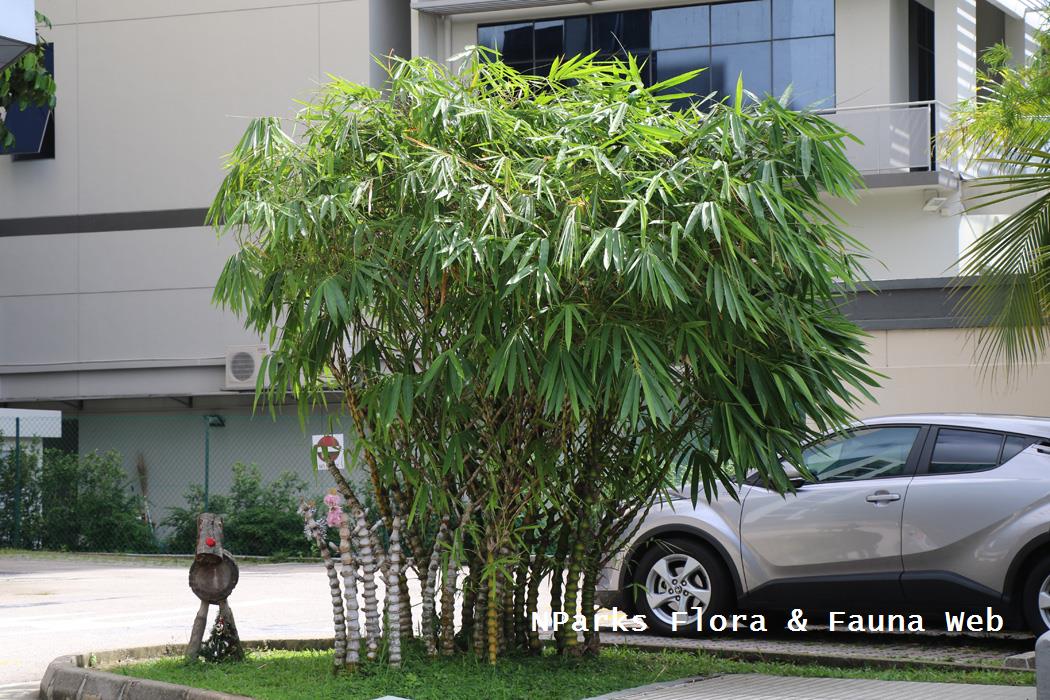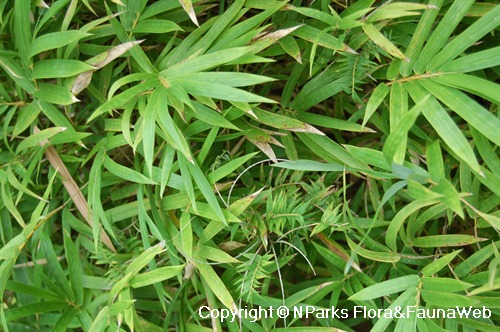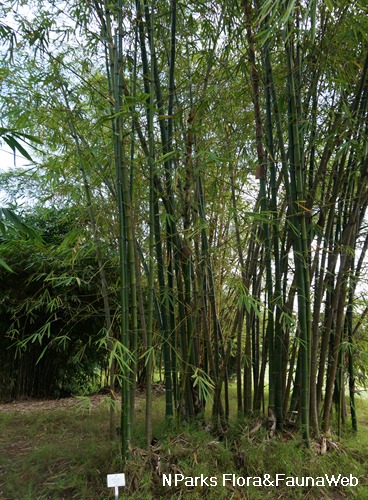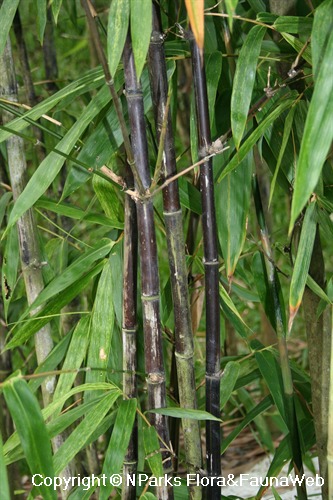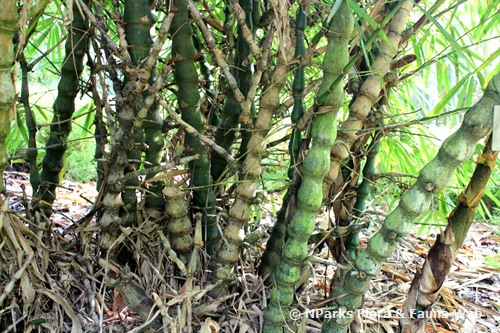
Back
Bambusa vulgaris 'Wamin'
| Family Name: | Poaceae (Gramineae) |
| Common Name: | Buddha's Belly Bamboo, Giant Buddha Belly |
Name
Classifications and Characteristics
| Plant Division | Angiosperms (Flowering Seed Plants) (Monocotyledon) |
|---|---|
| Plant Growth Form | Grass or Grass-like Plant, Bamboo |
| Lifespan (in Singapore) | Perennial |
| Mode of Nutrition | Autotrophic |
| Plant Shape | Weeping / Pendulous |
| Maximum Height | 5 m |
Biogeography
| Native Habitat | Terrestrial |
|---|---|
| Local Conservation Status | Non-native (Horticultural / Cultivated Only) |
Description and Ethnobotany
| Growth Form | This species forms open clumps of weeping culms. |
|---|---|
| Foliage | Leaves are linear with an acute apex. |
| Stems | The culms (12 cm wide) swell and protrude slightly at the nodes which are tightly spaced together. The culms on the perimeter of the clump lean gently outwards forming an arc. At 1-2 years of age, the culms become dull yellow, and at 3 years of age, the internodes form the characteristic potbelly shape. |
| Cultivation | This clump-forming species needs ample space to grow and should be planted at least 1 m away from fences or buildings. A 5- to 10-year-old specimen will form a 1.5 to 2 m wide clump. Apply fertilizer sparingly for culms that have more rounded internodes. |
| Ethnobotanical Uses | Timber & Products: The culms are useful for making furniture and ornamental products. |
Landscaping Features
| Desirable Plant Features | Ornamental Stems, Ornamental Form |
|---|---|
| Landscape Uses | Hedge / Screening |
| Thematic Landscaping | Zen / Minimalist Garden |
Plant Care and Propagation
| Light Preference | Full Sun |
|---|---|
| Water Preference | Moderate Water |
| Plant Growth Rate | Fast to Moderate |
| Propagation Method | Division |
Foliar
| Mature Foliage Colour(s) | Green |
|---|---|
| Leaf Area Index (LAI) for Green Plot Ratio | 3.5 (Shrub & Groundcover - Monocot) |
Image Repository
Others
| Master ID | 420 |
|---|---|
| Species ID | 1716 |
| Flora Disclaimer | The information in this website has been compiled from reliable sources, such as reference works on medicinal plants. It is not a substitute for medical advice or treatment and NParks does not purport to provide any medical advice. Readers should always consult his/her physician before using or consuming a plant for medicinal purposes. |


